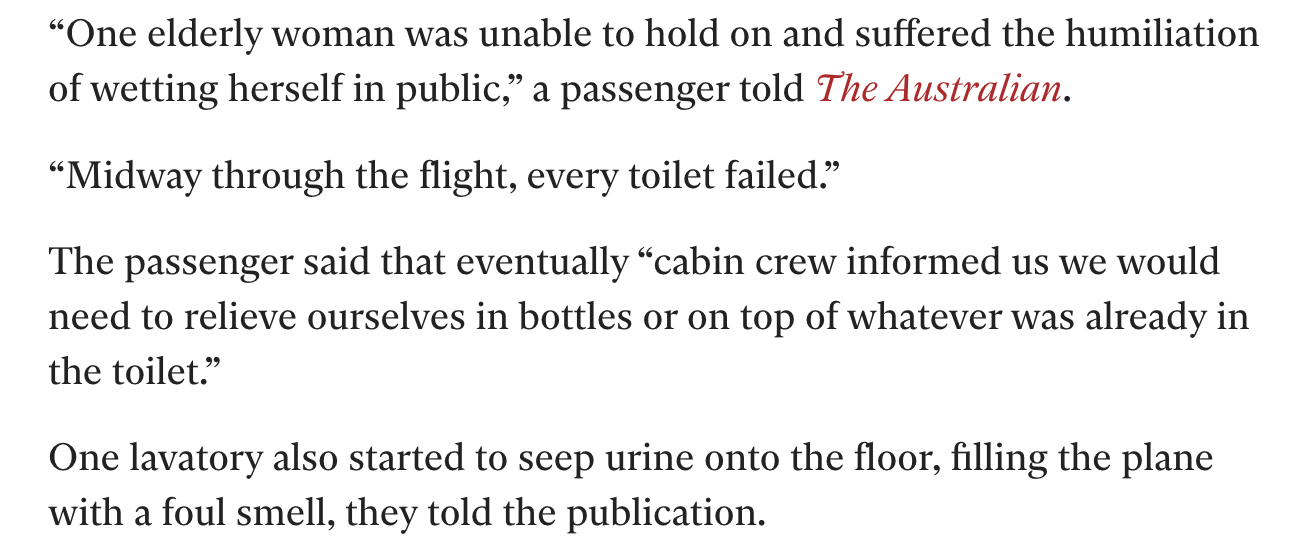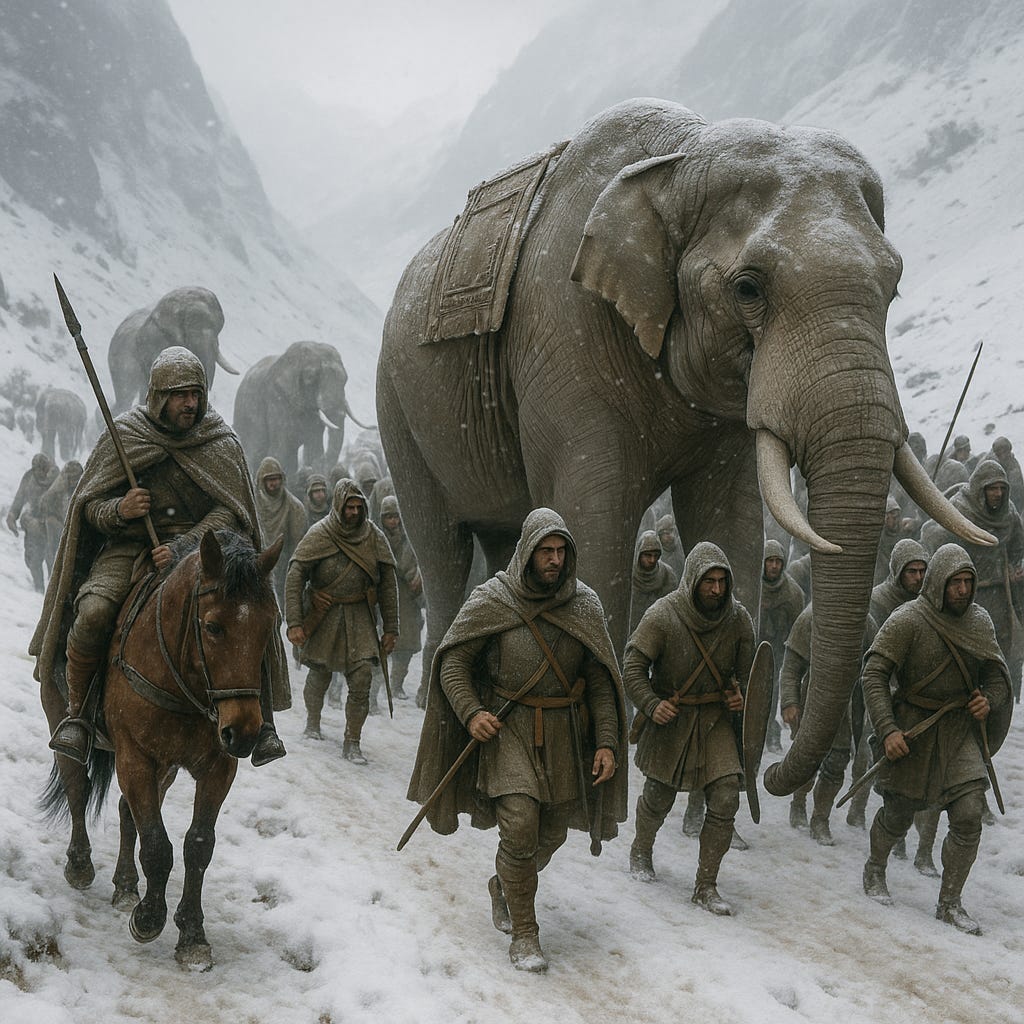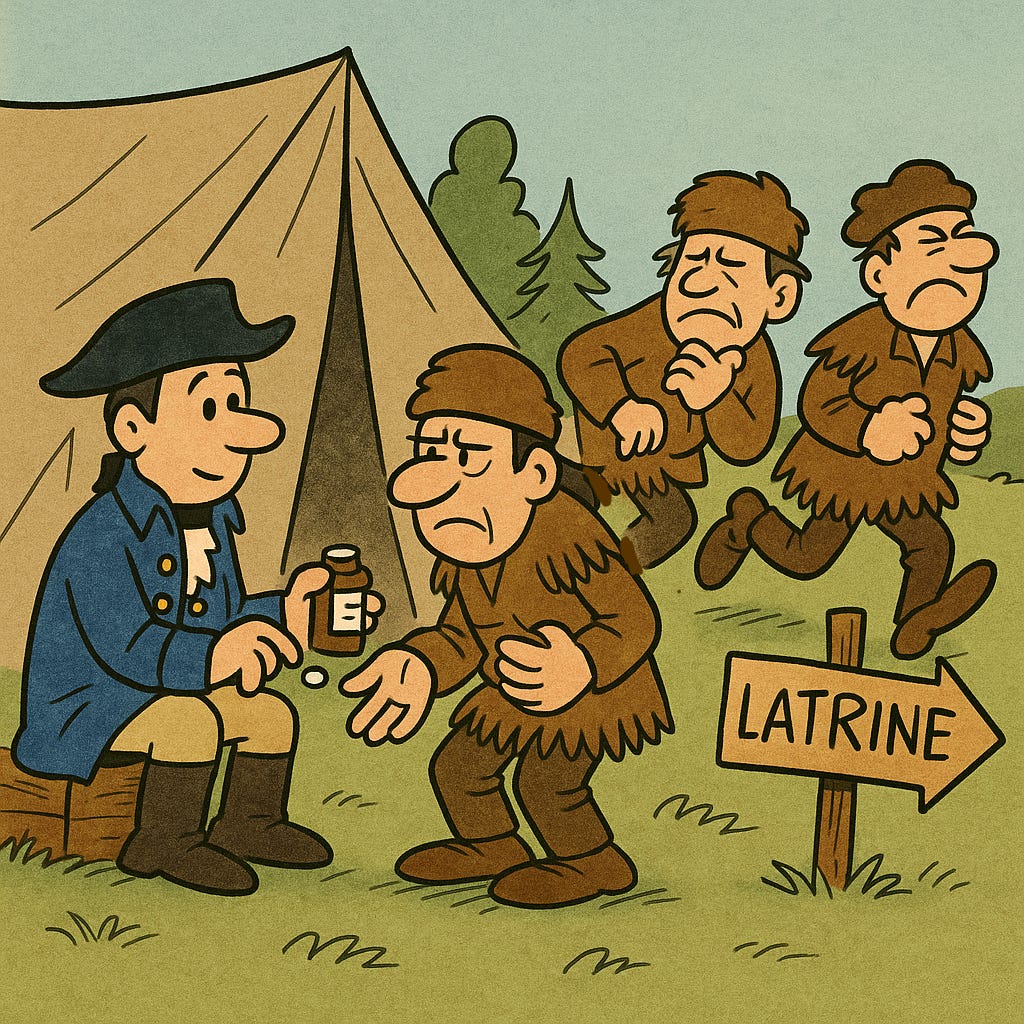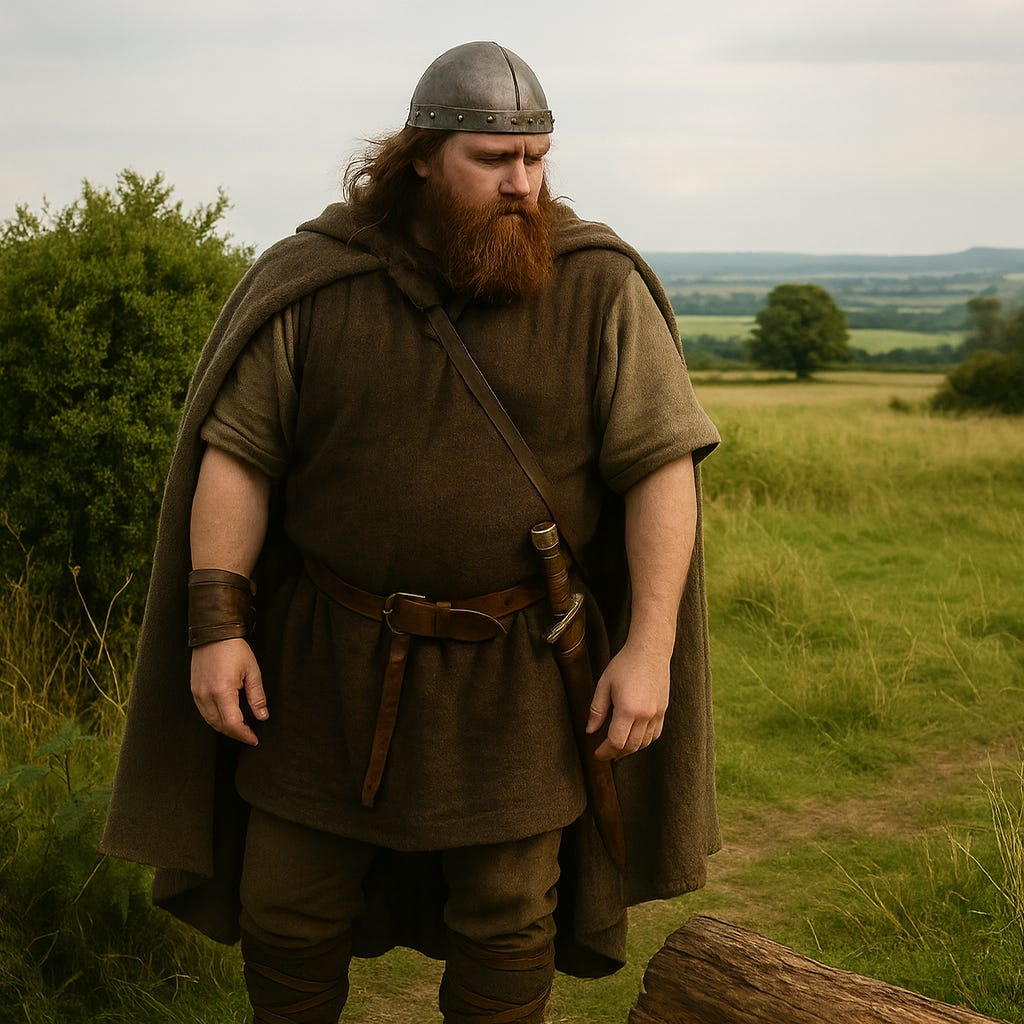Cross-post: Movements Through History
Number Two Clues: Sometimes the best way for historians to find out where people wanted to go was to figure out where they went
Besides being a rogue historian and free-range Sinologist, I am also the co-host of the upcoming podcast By Their Own Compass, which explores historical travelers and the journeys that have shaped our world. This is a special re-post of the podcast's regular newsletter, Compass Dispatches. If you enjoy this post, please consider subscribing for free to By Their Own Compass for more engaging newsletters and updates on the new podcast’s release.
The real truth about travel is that no matter where you go, your body will always have certain pressing needs. The search for comfort and relief of these needs has inspired some of the best (and worst) travel stories ever recorded, written, or told over a sloppy and stained plastic table outside a semi-closed beach bar in Phuket at 3:39 am.
This past week, passengers aboard Virgin Australia Flight VA50 were reduced to relieving themselves into water bottles during their six-hour Bali-to-Brisbane nightmare. This is every bit as bad as it sounds.
It seemed like 2025 was the Summer of Shit.* In addition to the unfortunate holiday goers on the way back from the Bali beaches, there was also Poop Cruise, another stellar entry in the Netflix "Train Wreck" series. A documentary series which, I will admit, is appointment telly if for all of the wrong reasons.
If you are among our many readers with more refined viewing habits than your correspondent, allow me to recap: In 2013, an engine fire left thousands of passengers stranded on the Carnival Triumph for days without power, air conditioning, or functioning loos. The ship became a floating sanitation nightmare with sewage backup, dwindling food supplies, and passengers camping on deck to escape the stench below. The media circus that followed forced Carnival to implement safety upgrades, though one suspects many passengers would have preferred those improvements before their holiday turned into a floating episode of "Survivor: Sewer Edition."
We hope that in such awful, ahem, shit-uations, the folks trapped aboard Carnival Triumph and Flight VA50 took consolation in knowing they're joining a rather impressive historical fraternity: travellers whose loo visits have become the subject of scholarly fascination. It is humanity's oldest documentary tradition: leaving behind organic evidence that tells future researchers exactly where we have been and what we have been up to. It's like a diary, written by your digestive system and so significantly more reliable than your Instagram Stories.**
How Hannibal's Army Marked Their Trail
For millennia it seems, military scholars have engaged in heated academic debate about precisely which route the Carthaginian general Hannibal took his 30,000 soldiers, 15,000 horses, and 37 war elephants up and over the alps in 218 BCE. Was it the Col du Clapier? The Little St. Bernard Pass? Perhaps the Col du Mont Cenis?
The answer, as it turns out, was buried in a peat bog the whole time, specifically, in what microbiologists from Queen's University Belfast refer to, with admirable scholarly detachment, as "a mass animal deposition event."
Deep in the Col de Traversette, a 9,800-foot pass on the French-Italian border, researchers found an ancient soil layer absolutely stuffed with Clostridia, a type of bacteria that comprises over 70% of the rather specialized microbial community found in horse manure. The evidence was so compelling that one can practically hear ancient Roman scribes muttering, "Well, obviously they went that way. Just follow the horse poop."
The research team is now hunting for what would be archaeology's equivalent of finding the Holy Grail in your nan's attic: an elephant tapeworm egg. (Although to be fair, there might be some of those in nan's attic, too.) As study co-author Chris Allen puts it with touching optimism, "This would really be the pot of gold at the end of the rainbow." One suspects Hannibal himself might have preferred his military legacy not rest entirely on his elephants' bowel habits.
American Frontiersmen and Their Mercury Habits
Then there is the Lewis & Clark expedition. Before he left for his intrepid journey of "discovery" through territory long inhabited by all kinds of folks, Meriwether Lewis stocked up on 600 "Rush's Thunderbolts."
Now, there have always been those travellers who sometimes - how shall we say this? - have trouble performing away from the home pitch. It was a particular problem for early 19th-century American explorers, as Lewis and Clark budgeted roughly nine pounds of meat per person per day for rations.
Nine. Pounds. Daily.
That's more protein than most of us consume in a week, ingested by men whose idea of dietary fiber was whatever bark they could scrape off trees during particularly desperate moments. The human digestive system was not designed for this level of non-Woke Vegan-trolling.
Nevertheless, we cannot recommend Rush's Thunderbolts for occasional travel discomfort, even in the context of an earlier era of American history. Rush’s formula included, among other active ingredients, a stiff concentration of mercury sure to get the patient's plumbing flowing merrily downstream again.
It’s not all glamour, history, and sunsets. Every so often we also delve into the messier side of travel. Subscribe to By Their Own Compass where we dig up the things other podcasts prefer to bury. Your inbox will thank you, even if your dinner guests won't.
Fortunately for modern archaeologists, if not Lewis and Clark's long-term neurological health, mercury doesn't decompose. Two centuries later, that chemical signature allowed researchers to pinpoint the expedition's campsites with GPS-level precision. The most famous site is now within Travelers' Rest State Park in Montana, and was confirmed not through ancient artifacts of timeless artistry or inspiring journal entries, but through the chemical traces left in the Corps of Discovery's latrine.
It turns out our most reliable evidence of where historical figures actually went comes from where they...well, went.
The Viking Specimen That Broke a Bank
Perhaps no discovery illustrates the archaeological value of travel-related digestive distress quite like the Lloyds Bank coprolite.*** In 1972, excavators working beneath a new branch of Lloyds Bank in York uncovered what is thought to be the largest fossilized human shit ever found: a 9th-century Viking specimen measuring an impressive eight inches long and two inches wide.
The find was so scientifically valuable that when Andrew Jones of the York Archaeological Trust appraised it for insurance purposes in 1991, he declared: "This is the most exciting piece of excrement I've ever seen. In its own way, it's as irreplaceable as the Crown Jewels."
One can only imagine the conversation at the insurance office that day. "Right then, Mr. Jones, and what exactly are we insuring today?" "Well, it's a ninth-century Viking turd, and it's worth more than your house."
The specimen revealed intimate details the Icelandic sagas seemed to always leave out. For example the producer of this famous piece of Danish dookie lived primarily on meat and bread. Hardly a balanced diet, although evidence suggests that other Vikings enjoyed fruits, leeks, shellfish, and nuts...whatever was available really after plundering the local monastery or a seaside Tesco Express.
More tellingly, the 9th-century coprolite contained several hundred parasitic eggs, indicating our Viking traveller was, in technical academic jargon, "absolutely riddled” with intestinal worms.
What makes these discoveries particularly compelling is their egalitarian nature. To borrow a phrase from a book which has sold far more copies than anything we might ever publish ourselves: Everybody Poops.
Hannibal's steed dropped the same type of road apples as the nags pulling the wagons. Lewis and Clark's digestive struggles were shared by every member of the Corps of Discovery, regardless of rank or military decoration. And a Viking's intestinal parasites might tell us more about ordinary medieval travel conditions than most royal chronicles could manage, even with volumes of purple prose.
In our (mostly) sanitised modern world, where airport loos come equipped with motion sensors and Japanese bogs feature technology sophisticated enough to guide a spacecraft to a safe and clean landing on the dark side of our moons, we often forget that travel has always been fundamentally, often uncomfortably, physical. The medieval pilgrim trudging toward Santiago de Compostela, the Silk Roader crossing Central Asian deserts, the colonial officer off to distant postings, the modern day traveller wandering Beijing's hutong alleyways: all faced the same basic challenge of maintaining human dignity while dealing with bodily functions thousands of miles from home.
That's all from your correspondents, currently stationed somewhere between a motorway services loo and the nearest Boots, where we remain committed to exploring the places people have been and the rather unfortunate evidence they've left behind.
*Especially if one follows the political news.
**Which might better resemble the fecal matter from another mammal, perhaps a male of the species Bos taurus?
***Coprolite = Fossilized shit. But you knew that, right?
Sources used/Further Reading:
Daley, Jason. "Horse Poop Helps Unravel the Mystery of Hannibal's Route Through the Alps." Smithsonian Magazine, April 5, 2016.
"Historic Latrines Help Archeologists Retrace the Lewis and Clark Trail." National Park Service, October 2022.
"Lloyds Bank coprolite." Wikipedia.
MacDonald, James. "Tracing General Hannibal's Path Across The Alps. In Poop." JSTOR Daily, April 21, 2016.
Neath, Amelia. "Passengers told to pee in bottles after toilets stop working on Virgin flight." The Independent, September 1, 2025.








The 19th century British Army measured distance between pit stops, hence Tennyson's too oft misunderstood line in "Charge of the Light Brigade," "half a leak, half a leak, half a leak onward."